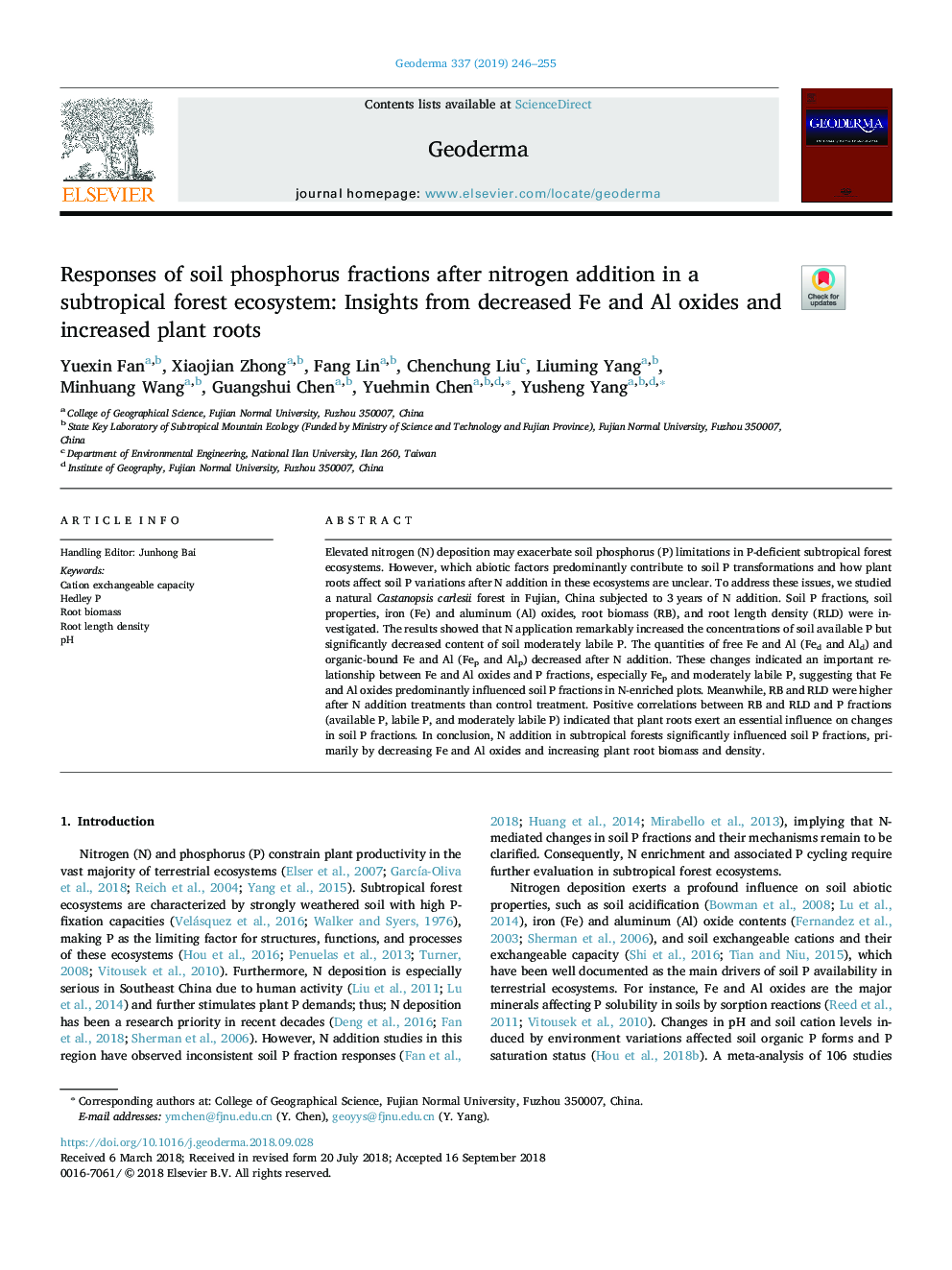| Article ID | Journal | Published Year | Pages | File Type |
|---|---|---|---|---|
| 10224007 | Geoderma | 2019 | 10 Pages |
Abstract
Elevated nitrogen (N) deposition may exacerbate soil phosphorus (P) limitations in P-deficient subtropical forest ecosystems. However, which abiotic factors predominantly contribute to soil P transformations and how plant roots affect soil P variations after N addition in these ecosystems are unclear. To address these issues, we studied a natural Castanopsis carlesii forest in Fujian, China subjected to 3â¯years of N addition. Soil P fractions, soil properties, iron (Fe) and aluminum (Al) oxides, root biomass (RB), and root length density (RLD) were investigated. The results showed that N application remarkably increased the concentrations of soil available P but significantly decreased content of soil moderately labile P. The quantities of free Fe and Al (Fed and Ald) and organic-bound Fe and Al (Fep and Alp) decreased after N addition. These changes indicated an important relationship between Fe and Al oxides and P fractions, especially Fep and moderately labile P, suggesting that Fe and Al oxides predominantly influenced soil P fractions in N-enriched plots. Meanwhile, RB and RLD were higher after N addition treatments than control treatment. Positive correlations between RB and RLD and P fractions (available P, labile P, and moderately labile P) indicated that plant roots exert an essential influence on changes in soil P fractions. In conclusion, N addition in subtropical forests significantly influenced soil P fractions, primarily by decreasing Fe and Al oxides and increasing plant root biomass and density.
Keywords
Related Topics
Physical Sciences and Engineering
Earth and Planetary Sciences
Earth-Surface Processes
Authors
Yuexin Fan, Xiaojian Zhong, Fang Lin, Chenchung Liu, Liuming Yang, Minhuang Wang, Guangshui Chen, Yuehmin Chen, Yusheng Yang,
